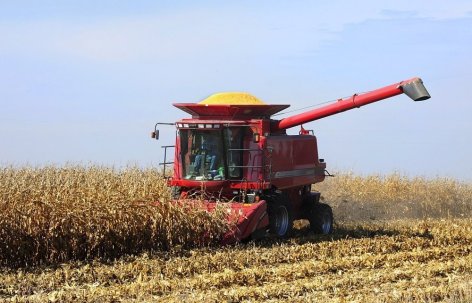AMES, Iowa – With the harvest underway in Iowa, Iowa State University agricultural experts are available for media interviews to talk about trends, field conditions and market considerations.
Chad Hart, associate professor of economics and grain markets specialist
Recent U.S. Department of Agriculture projections predicted American farmers to harvest 14.8 billion bushels of corn this year and 4.7 billion bushels of soybeans. That would be the largest soybean crop in U.S. history and the second largest corn crop, behind 2016, Hart said.
In fact, a harvest on par with USDA projections would continue a string of big harvests going back half a dozen years, adding up to massive global supplies that most likely will keep grain prices from rebounding.
“When you get these record supplies year after year after year, it does tend to keep prices down,” Hart said.
Hart said he’s encouraging farmers to find ways to protect themselves from current low commodity prices. It may make sense to delay sale of grain until the winter or spring, he said, especially if the U.S. makes progress in trade talks with major markets such as Mexico and China.
Mark Licht, assistant professor of agronomy
Licht said the soybean harvest should conclude by early October and corn harvest by late October, unless wet weather keeps farmers out of the fields. Licht said the corn crop matured as much as two weeks ahead of schedule in some areas of southern and central Iowa due to warm temperatures in May and June jumpstarting the crop’s vegetative growth. That could lead to grain quality concerns such as some kernels germinating while still on the ear.
Licht said heavy rains in recent weeks could create other grain quality problems as well. He urged farmers to look for mold and stock integrity problems and get those acres harvested first.
“That way, we get that grain out of the field and dried down to minimize further degradation and field losses associated with ear mold and compromised stock integrity,” he said.
Charles Hurburgh, professor of agricultural and biosystems engineering
Hurburgh said heavy rain in some parts of the state and drought stress in other parts throughout the growing season may create the risk of toxigenic molds that could lead to aflatoxin and vomitoxin. These toxins are produced by fungi that grow in grain under specific conditions. He recommended grain elevators and users collect daily composite samples of new corn early in the harvest as a precaution, though he doesn’t think such problems will be widespread. Field scouting for molds can provide good advance warnings about the possibility of problems as well, he said.
Another large crop, following several large crops in previous years, will test the state’s storage capacity as well, Hurburgh said. He expects around 800 million bushels of grain harvested in Iowa this year to be placed in temporary storage before finding a permanent home. And, with prices remaining stubbornly low, farmers may hesitate to sell new grain in the hope of finding better prices later.
Hurburgh stressed that successful long-term storage requires farmers to cool and dry grain as quickly as possible after getting it out of the field. He encouraged farmers who find mold to set their driers at their maximum settings and avoid slow-drying techniques.
“A good portion of the crop will need to be kept over a year, so what you do now makes all the difference,” he said.
He recommended farmers dry corn down to about 14 percent grain moisture and soybeans to 12 or 13 percent grain moisture if long storage periods are expected into the spring and summer of 2019.
